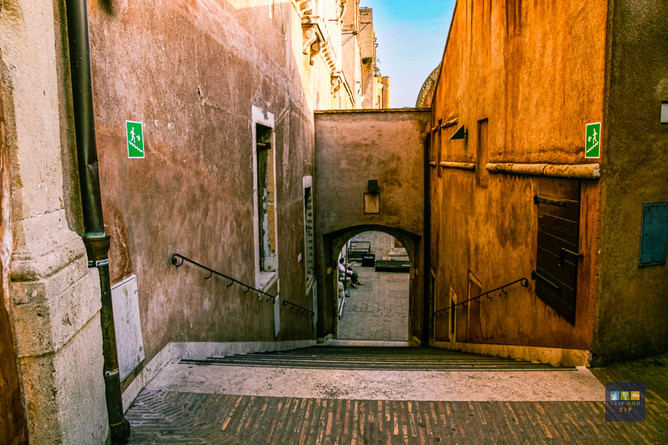Hadrian Built It, Rome Transformed It
- Trip And Zip

- Aug 25, 2007
- 2 min read
There’s a spot in Rome where the past isn’t something you read about—it’s something you climb. Castel Sant’Angelo is a storybook written in stone, with emperors, popes, angels, and a few sword fights thrown in for good measure. And the best part? It comes with a rooftop view that feels like a reward for making it up all those ramps. 😉



Originally raised around 135 AD as Emperor Hadrian’s mausoleum—his final gesture of control over life and death—the structure’s imposing round form has long outlived its original purpose. Yet time hasn’t dulled its edges; it has only deepened its meaning. As the centuries unfolded, this solemn tomb transformed—first into a military fortress, then a papal refuge during times of fear and fire, later a prison, a palace, and now a museum.
Rome’s layered reality cast it in every role imaginable, and the stones have absorbed every line of the script. Legend has it the Archangel Michael appeared here in 590 AD, sheathing his sword to signal the end of a plague. Rome doesn’t do drama halfway! 😉


On a summer afternoon, brushed with that soft, honey-colored light unique to this city, we found ourselves standing before Castel Sant’Angelo—a place that always called for attention during all our downtown trips to Rome, but that we never quite made time for. Until now.
Wandering inside, you pass lavish papal apartments, winding staircases, and rooms that once held more secrets than you can imagine. The interiors reflect layers of artistic ambition—Renaissance frescoes, Baroque flourishes, and touches of medieval austerity all coexisting under the same ancient roof. It’s like walking through a history-themed escape room—minus the timer.
But let’s talk about that view from the roof. Because once you reach the top, Rome unfolds in every direction. The dome of St. Peter’s shines in the afternoon sun, the Tiber loops gently below, and the city rolls out like a faded Renaissance painting brought to life. Warm summer light softens everything—the rooftops, the air, even your thoughts.




We stayed up there longer than planned. There’s something about watching Rome from above that puts everything into perspective. Not in a heavy way, just… clearer.
Castel Sant’Angelo doesn’t try to impress you—it just patiently tells its story. And if you give it time, you’ll walk away with more than just good photos. You’ll feel like you’ve had a quiet conversation with the city itself.










Comments